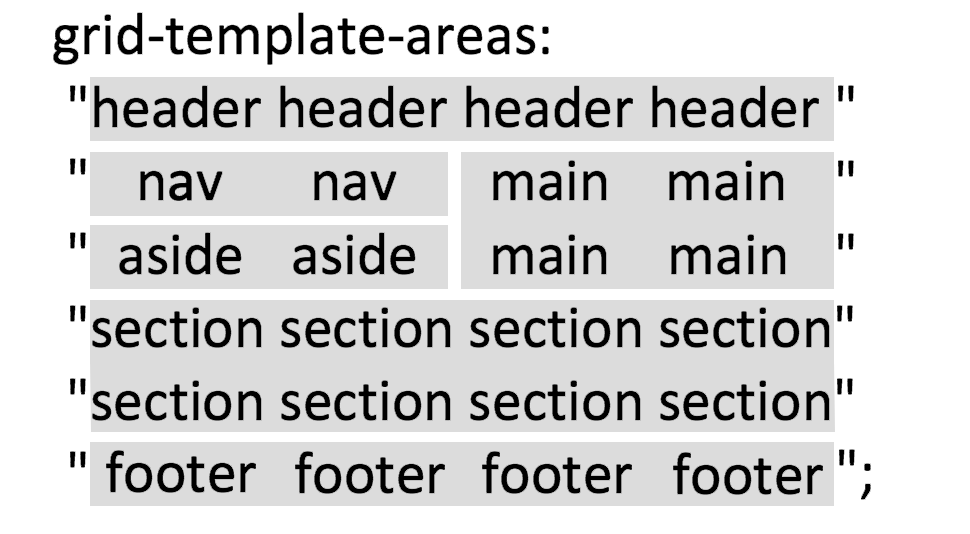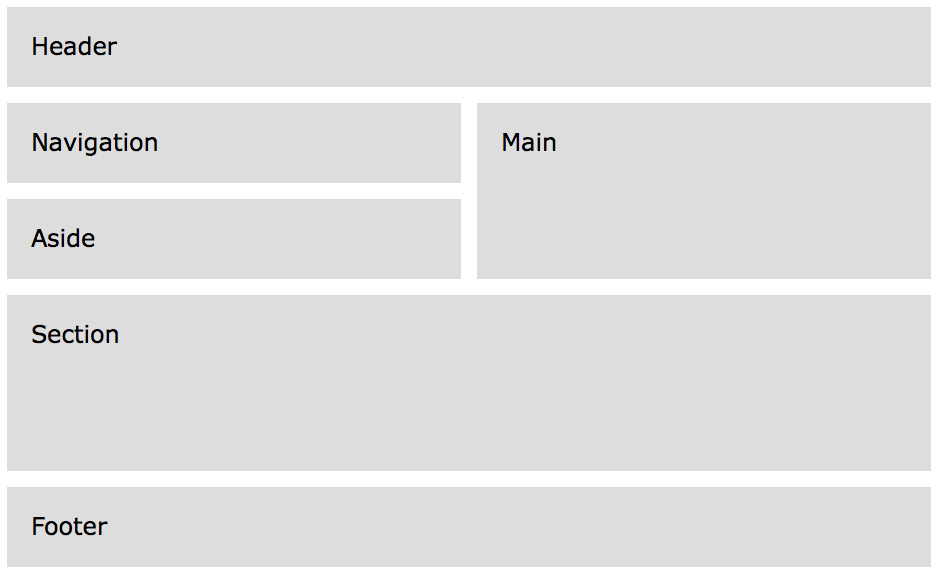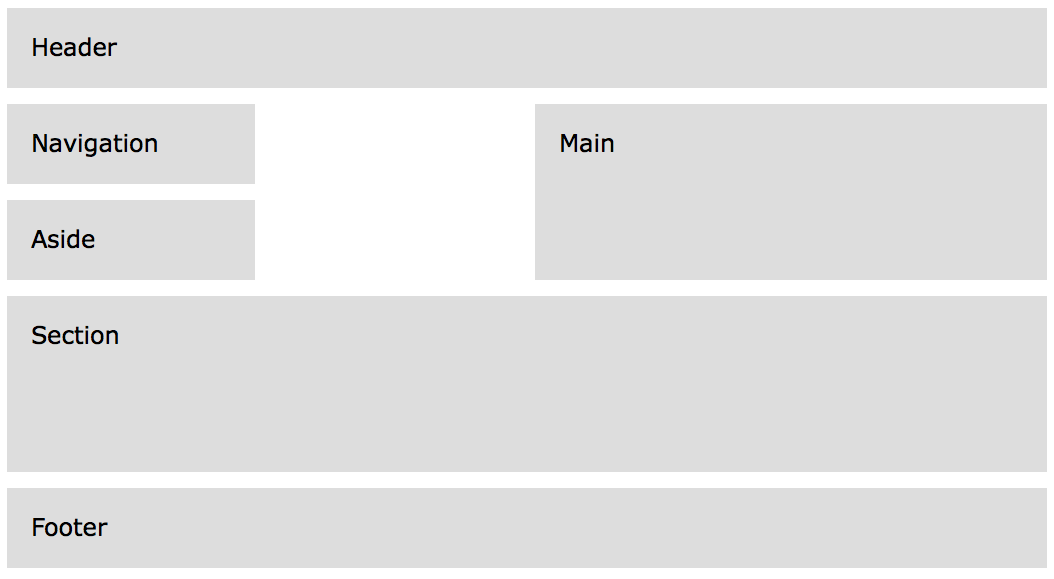Layout with Grid Areas
Perhaps the most intuitive way to handle layout with CSS Grid is to use grid areas. Grid areas allows you to give layout names to HTML elements and then visually represent the layout within the code itself. Some have likened it to ASCII art, a situation where type itself forms an image, such as seen here. We'll see how that works with CSS Grid's areas later in this lesson.
We will create the layout below using grid areas. We've taken the liberty of drawing gray lines over the layout to show the number of columns and rows and their locations. Notice that this layout is using four columns and six rows.





